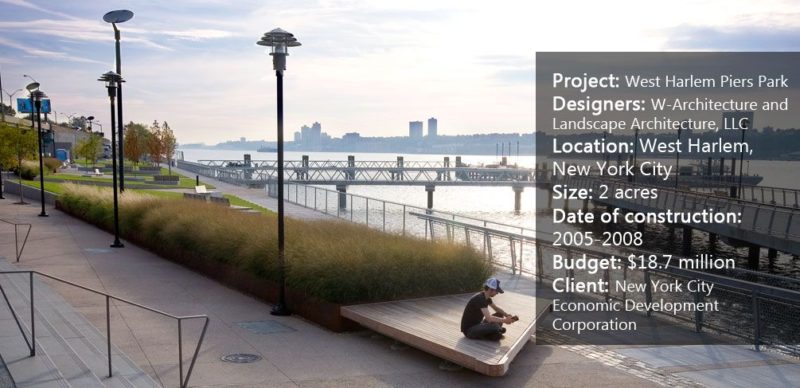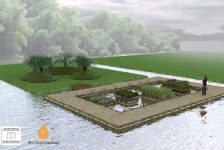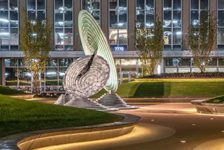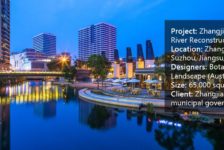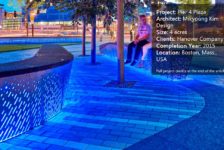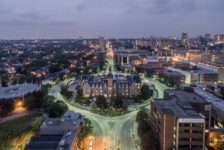West Harlem Pier Park, by W-Architecture and Landscape Architecture, LLC, in West Harlem, New York City. What is a public space? Are we prisoners of the cities in which we live? Are we powerless against events and bigger forces? What is the value of our desires? This is the story of a place built amongst the abandoned manufacturing and industrial areas of New York City’s West Harlem neighborhood, a place that was once a bustling harbor, but faded into decay after the construction of the George Washington Bridge and the Henry Hudson Parkway. The area that is now West Harlem Piers Park had lost its strategic value, remaining a marginal area cut away from the city by vehicular and subway viaducts, left to the destiny decided by its owners’ succession. The narrow area situated in the northern section of Manhattan’s peninsula, with a potential westerly access to the river, fell victim to pollution, criminality, unemployment, and social disadvantages.
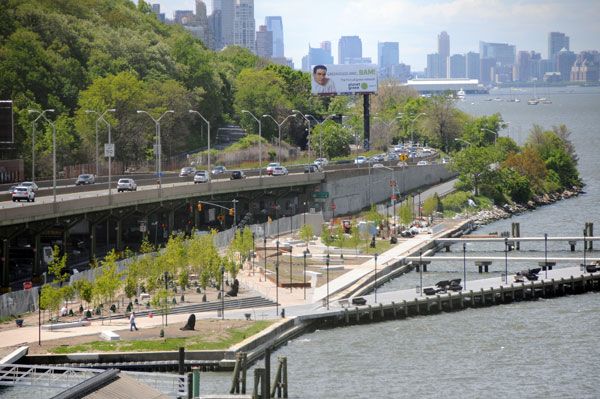
West Harlem Piers Park. Photo courtesy of W-Architecture and Landscape Architecture, LLC
West Harlem Pier Park
Things could have gone from bad to worse if not for the development of the park, thanks to the design by W-Architecture and Landscape Architecture, LLC and the resolute perseverance of 40 fervent groups of citizens, which took a position against city proposals to use the land in ways that didn’t satisfy the real needs of the local neighborhood. Reviving the River The park, first proposed by these groups and the city at the end of the 1980s, reached the design stage in 2003. It was built in 2008, healing wounds to the urban pattern and reviving access to the Hudson River, previously denied by fenced zones and parking lots.

West Harlem Piers Park. Photo credit: Barbara Wilks
- Extraordinary Development Re-connects City With The River Bank
- Turenscape Design Outstanding River Park
- Green Revival Brings Life Back to River Park
A Charming Design The charming design opens view corridors to the water directly from the streets, inspires itself from the cove and the valley, mimics the movement of the river, and creates a connection between the urban area and the water. Thanks to a new zoning plan relocating narrow activities in favor of small shops and bars, new life has been breathed into the area.
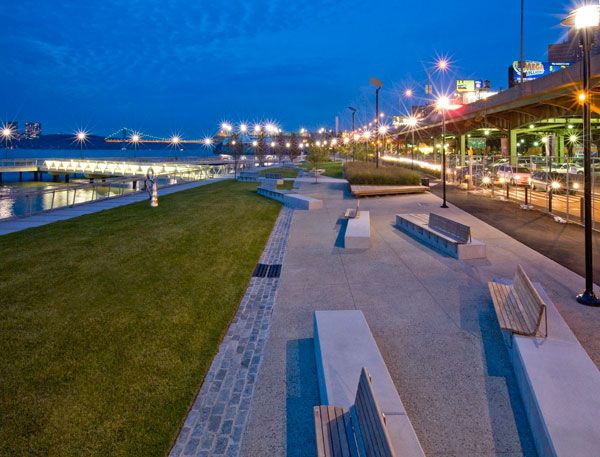
West Harlem Piers Park. Photo courtesy of W-Architecture and Landscape Architecture, LLC
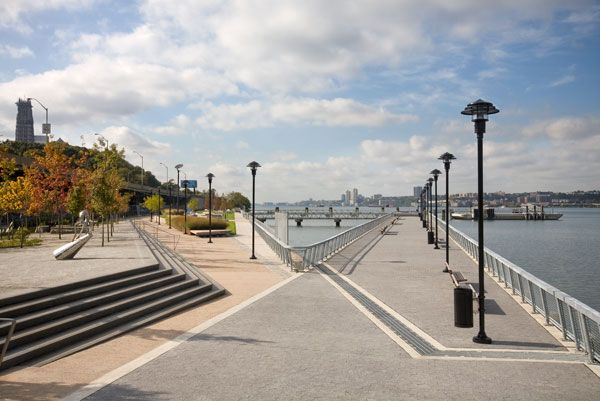
West Harlem Piers Park. Photo courtesy of W-Architecture and Landscape Architecture, LLC
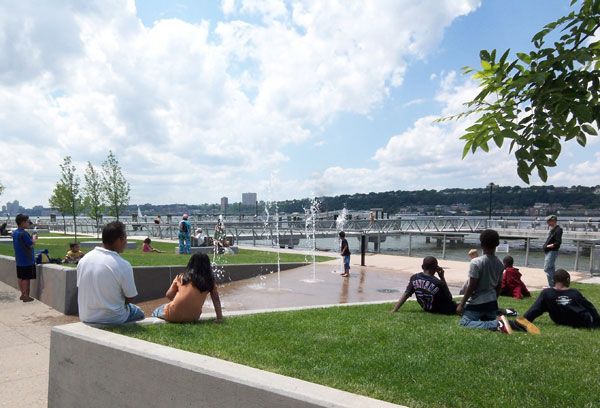
West Harlem Piers Park. Photo courtesy of W-Architecture and Landscape Architecture, LLC
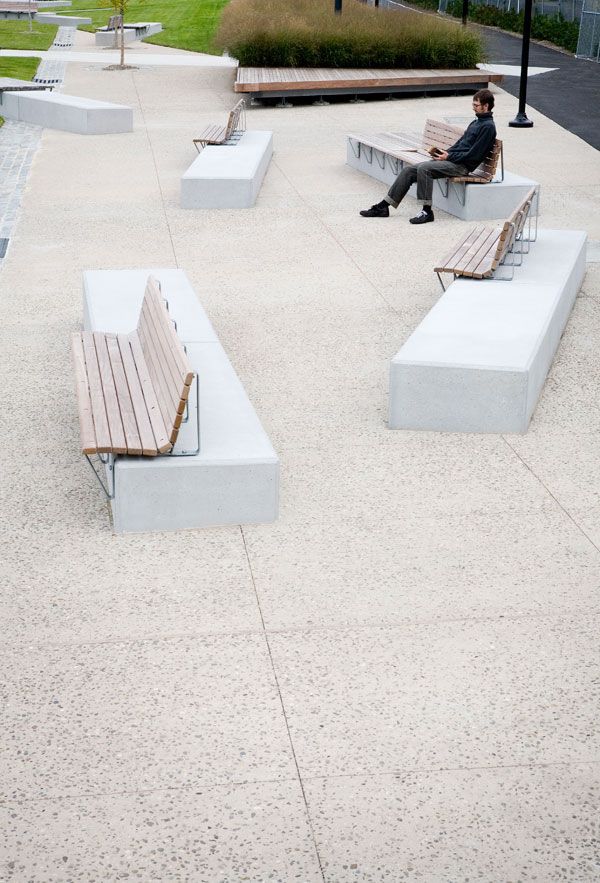
West Harlem Piers Park. Photo courtesy of W-Architecture and Landscape Architecture, LLC
Preserving the Past at West Harlem Pier Park
But memories haven’t been lost: Many elements of the design, such as the benches, come from the area’s original narrow bulkheads and seem to have been carried by the force of the river to be set down in the park. The renewed viability, the relocation of the parking lot from the waterfront, the widening of the park area by the half closure of the marginal street next to the park, have all created a haunting park that includes post-industrial-themed sculptures by Harlem-based artist Nari Word. The sculptures underline and reflect the narrow personality of the area.
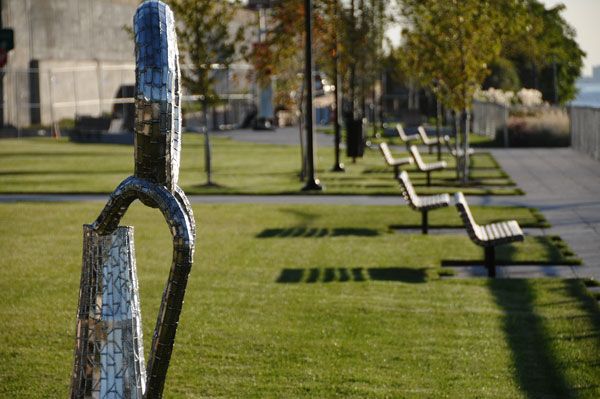
West Harlem Piers Park. Photo courtesy of W-Architecture and Landscape Architecture, LLC
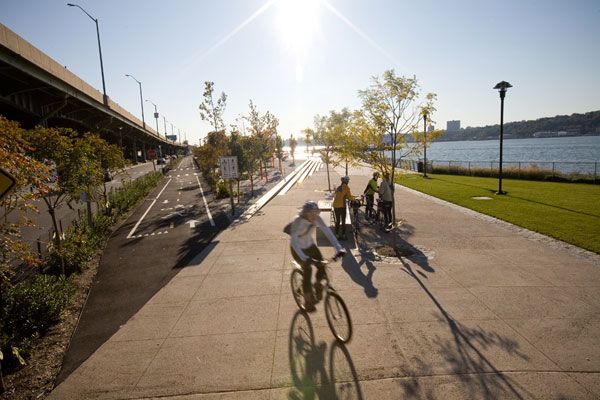
West Harlem Piers Park. Photo courtesy of W-Architecture and Landscape Architecture, LLC
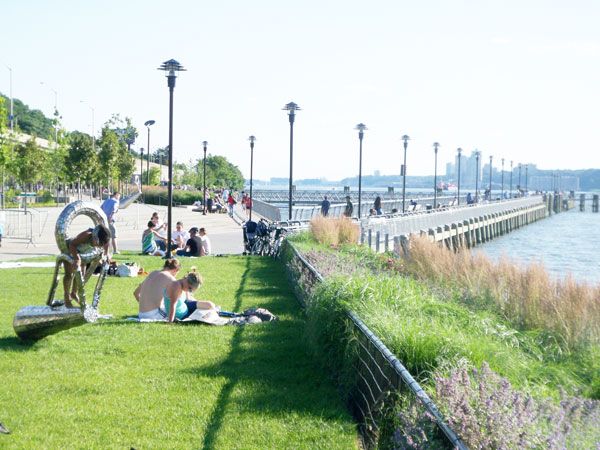
West Harlem Piers Park. Photo courtesy of W-Architecture and Landscape Architecture, LLC

West Harlem Piers Park. Photo credit: Tatiana Choulika
- Design with Nature by Ian L. McHarg
- Sustainable Urbanism: Urban Design With Nature by Douglas Farr
Article by Valentina Ferrari Return to Homepage
Published in Blog


